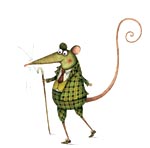Country mouse on making hay
Making hay involves gambling heavily on the British weather, which for once has been exemplary says Mark


Long lines of grass lie baking in the sun; other fields are already empty and ghostly pale. It's haymaking time and, this year, thanks to the settled weather, it has been a doddle.
The recipe for making hay is simple: take one grass field, cut it, leave in hot sun with a breeze for two or three days and turn once or twice during the process; bale it and put it in a barn. If only it was always that easy.
Nothing created more tension in my childhood than haymaking. For every benign year such as this, five were fraught. Weather forecasts were listened to with the intensity of wartime broadcasts. At our farm, the decision of when to cut was as risky a gamble as roulette. ‘Make hay while the sun shines', but what happens when it doesn't? For weeks.
If the sun does decide to appear, the British summer is famed for being two fine days and a thunderstorm-the perfect way to ruin the recipe. However, one way or another, the hay always got made. Some years, the recipe worked better than others and the quality of the hay was superb. 2010 looks like being an outstanding vintage.
Exquisite houses, the beauty of Nature, and how to get the most from your life, straight to your inbox.
Country Life is unlike any other magazine: the only glossy weekly on the newsstand and the only magazine that has been guest-edited by His Majesty The King not once, but twice. It is a celebration of modern rural life and all its diverse joys and pleasures — that was first published in Queen Victoria's Diamond Jubilee year. Our eclectic mixture of witty and informative content — from the most up-to-date property news and commentary and a coveted glimpse inside some of the UK's best houses and gardens, to gardening, the arts and interior design, written by experts in their field — still cannot be found in print or online, anywhere else.
